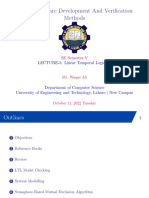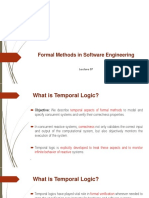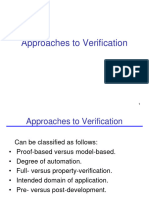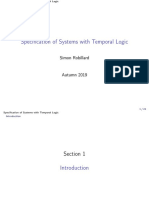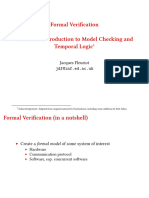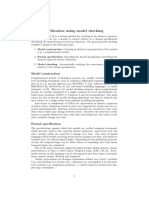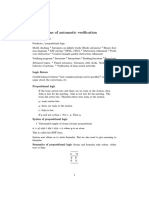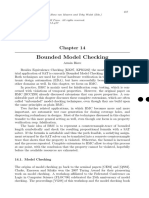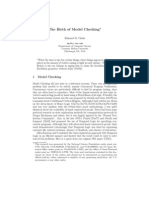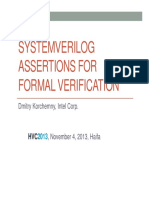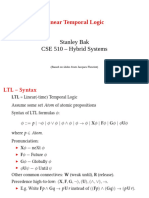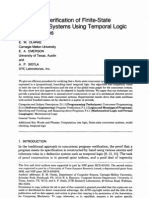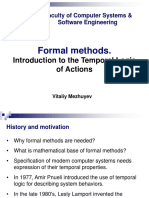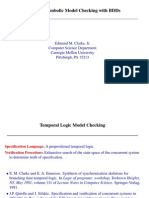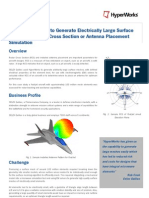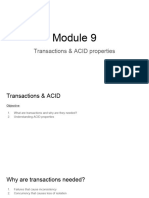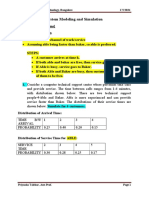0% found this document useful (0 votes)
64 views14 pagesAssertion Based Verification - Scribd
The document discusses formal verification concepts including temporal logic, linear temporal logic (LTL), computational tree logic (CTL), and model checking. It provides examples of LTL and CTL formulas to specify system properties. The document also discusses static versus dynamic formal verification and different model checking tools that can be used, including SPIN and SMV. The goal is to introduce formal methods for rigorously specifying and verifying properties of reactive systems.
Uploaded by
Surinder SoodCopyright
© © All Rights Reserved
We take content rights seriously. If you suspect this is your content, claim it here.
Available Formats
Download as PPTX, PDF, TXT or read online on Scribd
0% found this document useful (0 votes)
64 views14 pagesAssertion Based Verification - Scribd
The document discusses formal verification concepts including temporal logic, linear temporal logic (LTL), computational tree logic (CTL), and model checking. It provides examples of LTL and CTL formulas to specify system properties. The document also discusses static versus dynamic formal verification and different model checking tools that can be used, including SPIN and SMV. The goal is to introduce formal methods for rigorously specifying and verifying properties of reactive systems.
Uploaded by
Surinder SoodCopyright
© © All Rights Reserved
We take content rights seriously. If you suspect this is your content, claim it here.
Available Formats
Download as PPTX, PDF, TXT or read online on Scribd
/ 14

